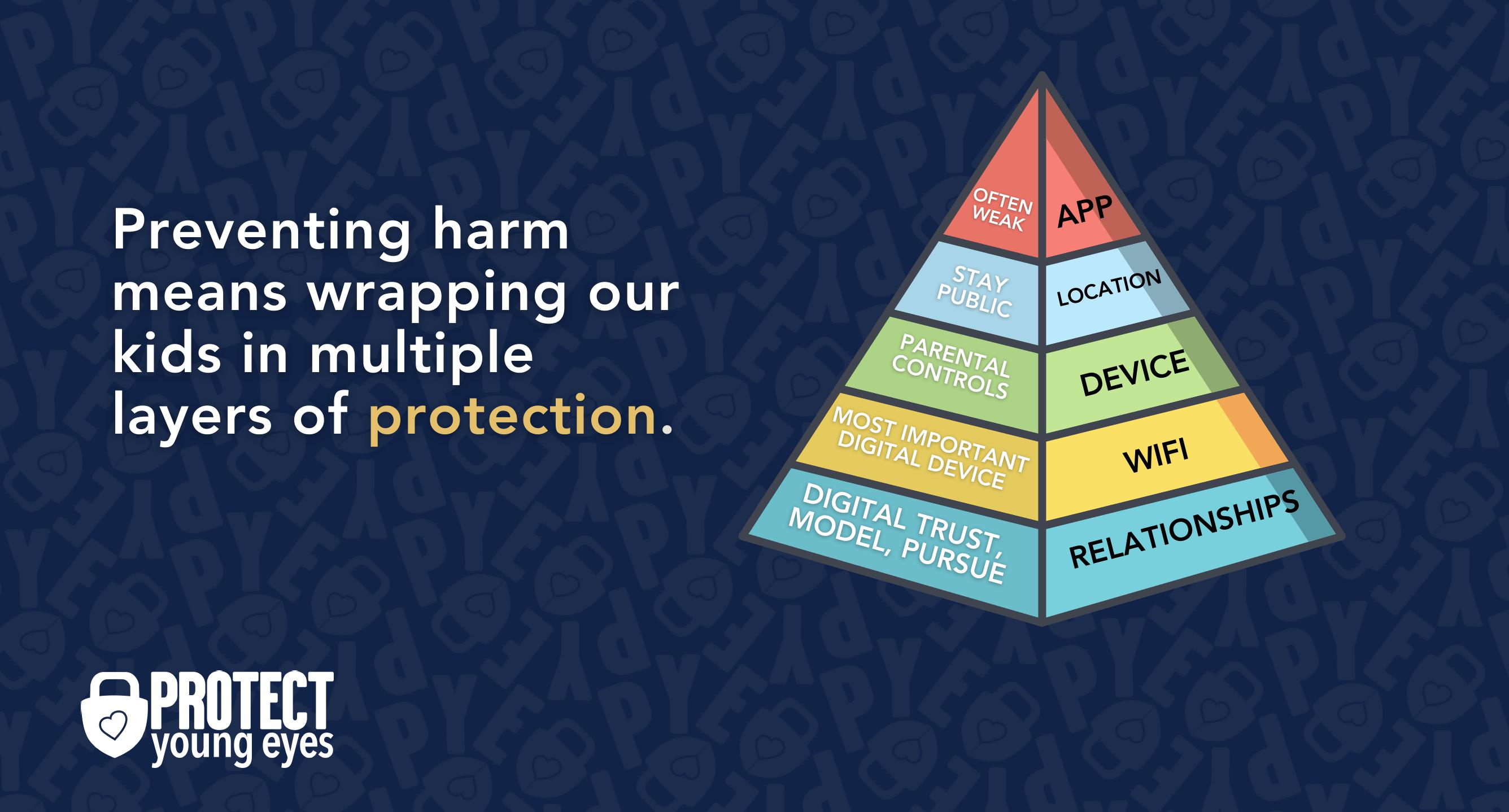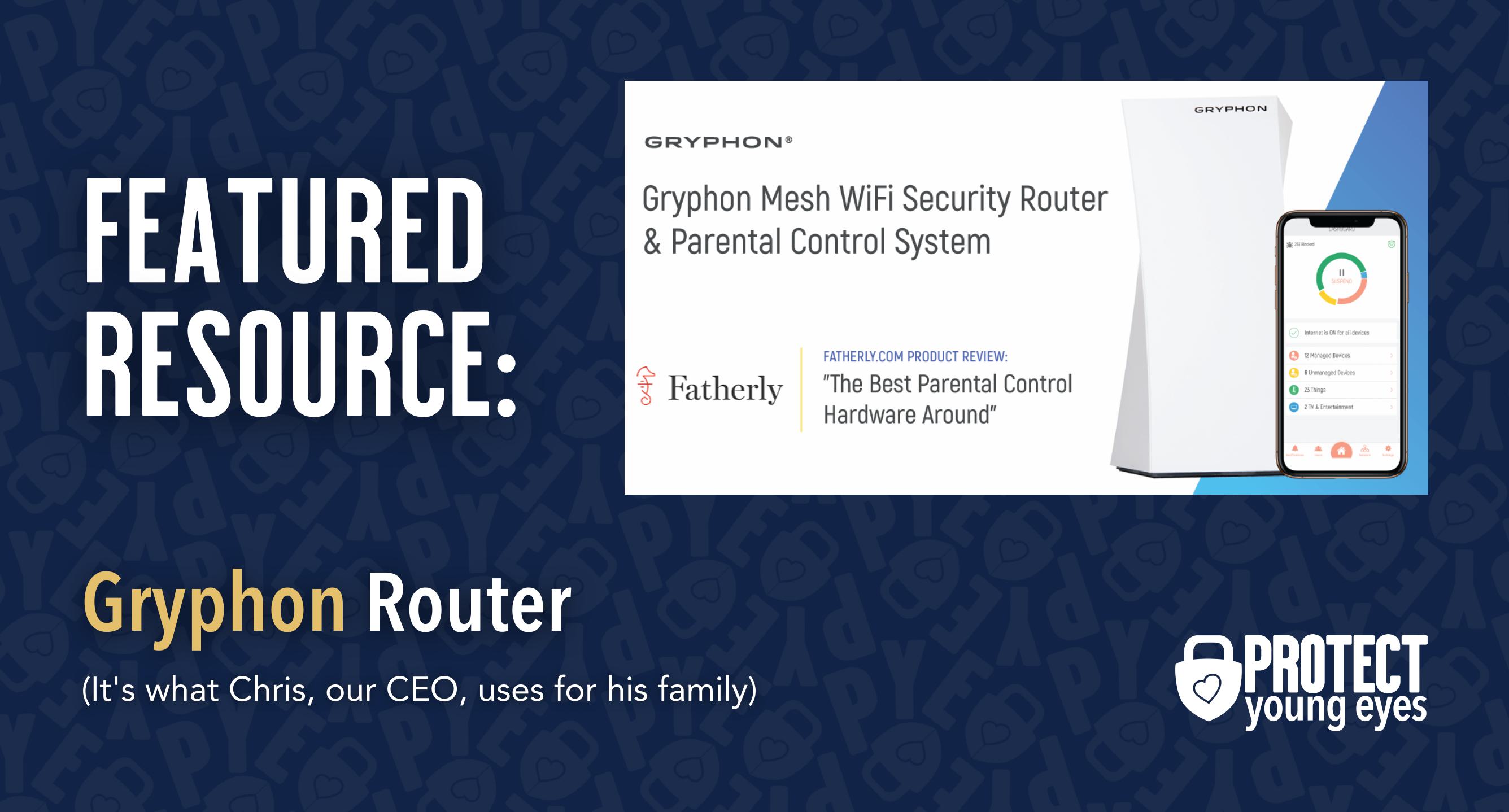Join the Movement - Sign the Delay Manifesto 📑


Streaming Device Parental Controls Step-by-Step
We love watching movies whenever we want! Especially over the holidays when Netflix and Disney+ get plenty of watch time. The Protect Young Eyes Team wants to show you how to enjoy these services through whatever streaming device you own, while also removing the junk.
Guard your Streaming Device with Layers
We believe the best way to prevent digital harm on all digital devices is by following our 5 Layers of Protection:
Layer 1: Relationships
Layer 2: WiFi (Router)
Layer 3: The Streaming Device
Layer 4: Location
Layer 5: App

In a digital world that is increasingly hostile toward children, our response must be strong and relevant. That's why we believe in wrapping our kids in multiple layers of protection. One or two are often not enough.
Layer 1: The Relationship (Build Digital Trust)
To learn why our relationships with our children are the foundation of protection and how to build digital trust (Layer 1), here are relevant blog posts:
- 10 Before 10: Making Porn a Normal Conversation
- How to Talk to a 5-year-old About Porn
- Tricky People -Stranger Danger in the Digital Age
- What is Sextortion? A Prevention and Response Guide for Families
- Why Kids Look at Pornography
Layer 2: WiFi (Router)
The Router is the most important digital hardware in the house! And, it’s often the most ignored. But, you are responsible for every digital click on your home’s network, so monitoring and controlling its activity is important.
Popular options for parents are:
- Gryphon Advance Security & Parental Controls router. This is the router used by our CEO, Chris, with his four children. It gives you time control, YouTube Restricted Mode, and more. Easy set-up and a parent app that allows you to pause the internet with one touch.
- Alternatively, if you love your current router, but simply want to exert more control over it, then we recommend Bark Home. It connects to your router, giving you stronger parental controls over your home’s network. It’s not a router, but connects to your router. Easy-to-use app for you to exert screen time and app control over your kid.

Bonus content – we tested the best routers out there and here’s WHY we picked Gryphon.
Layer 3: The Streaming Device
Apple TV Parental Control Set-up

Apple TV streaming device parental controls are called Restrictions and are governed by a 4-digit PIN. For iPhone users who have used Screen Time, this will sound familiar. Follow these steps:
- Using the Apple TV remote, select the Settings app at the bottom of the Home Screen.
- In the Settings Menu, select General from the list of options shown.
- In the General Menu, select Restrictions from the list of options shown.
- In the Restrictions Menu, select Restrictions to turn it on, and then enter a 4-digit PIN (passcode). Re-enter those numbers once more to confirm, then select OK to continue (don’t forget this number!).
- Within this same Restrictions Menu are options to customize access to multiple features, including purchases, movies, apps, music, podcasts, ratings, and more. It’s worth the time to click through them all and set the desired preferences.
Separately, parents will want to set parental controls on third-party channels accessed through the Apple TV. The channels below are simply using the Apple TV as another exit point for their content. Therefore it’s entirely up to parents to ensure the accounts on each of these streaming apps are set up appropriately.The great thing is, if you get the controls set up correctly at the APP level below, then no matter how you access them – Apple TV, a smart TV, a tablet, etc. – the controls will help create a safer digital experience.
- Netflix
- Disney+
- Roku
- Amazon
- Hulu
- VUDU
- Sling TV
- HBO Now (regular HBO)
- (HBO) Max (includes additional titles, e.g., Warner Brothers).
- YouTube: Make sure Restricted Mode is set at the router level. Your router is the most important digital device in your home! Check out the image below for more information.
- Twitch (now streams on smart TVs, too!)
Roku Parental Controls
We’ve already created a highly-utilized Roku parental controls write-up (used by >1,000 people weekly).
Chromecast Parental Controls
Chromecast doesn’t have parental controls because it doesn’t need them. It’s just an HDMI adapter that lets you stream computer content directly to your TV wirelessly. This means you’ll need to set parental controls at the operating system level of whatever type of computer you’re using and at the account level for streaming services like Netflix, Hulu, and others.
Links to streaming services like Netflix are above under the Apple TV section. Links to operating system parental controls and a few other streaming services you might watch are here:
- Windows (PC) parental controls
- MacBooks parental controls
- Chromebook parental controls
- Disney + Parental Controls
Amazon Parental Controls
There are multiple layers to consider regarding Amazon and parental controls:
- The Amazon Prime Video app on just about anything (smart TV, Android, iOS, Xbox, 360, Web)
- An actual Fire TV, and making sure overall access to the TV and its functions is controlled, often with a 5-digit passcode.
- Fire Tablets
- A smart TV that uses an Amazon Fire Stick
It’s a lot, I know! No worries. Here is how you set up each of these Amazon layers.
How to set up Parental Controls in Prime Video:
First, you’ll need to establish a 5-digit, Amazon Video pin. This is important since the Prime Video app can be accessed through so many different devices, as shown above. Once you set up a PIN for Prime Video, it is enforced across all devices.How to set your 5-digit Prime Video pin through a web browser:
- Log into your Amazon account through a web browser.
- Select the Prime Video from the “All” option in the left menu (see the image below).
- Click the Settings gear in the upper right corner (see image below).
- You’ll see Parental Controls on the top.
- Then select what you want! There are options for Viewing Restrictions and you can ensure that purchases require your PIN (See below). Pay close attention to all of the devices at the bottom where the Amazon credentials are being used!

You can set up the 5-digit PIN from the Prime Video app on mobile and other devices, but it’s easier from the desktop. In case you’re curious:
How to set up Parental Controls on a Fire TV:
- On the Fire TV homepage, go to Settings.
- Within Settings, go to the menu item Preferences.
- Select Parental Controls.
- To enable parental controls, enter your PIN.
- Select a level of viewing restrictions to restrict the playback of videos across all apps with certain age ratings.
How to set up Parental Controls on a Fire Tablet:
We cover the step-by-step instructions in our Complete Fire Guide for parents!
How to set up Parental Controls on a Device using a Fire Stick:
Great news! The Fire Stick just accesses your Prime Video account via your home wireless network, often in a situation where you have a flatscreen TV that isn’t “smart.” This means that by following step #1, establishing controls over your Prime Video account with the 5-digit pin, you’re all set!
Fire TV Gaming: Fortnite can be played right on Fire TV as long as you have a Prime membership or a Luna+ subscription. Important to keep track of what else might be happening on your TV!
After you’ve mastered parental controls for your streaming device, it’s time for popcorn, soda, and time with family!
Layer 4: Location (It matters)
Guard the location of the device. Why? Because where kids use technology often dictates how they use their technology.
Related post: The 5 Worst Places for a Kid to be Online
We have strong opinions about managing where kids use their tech. For example, let’s keep all internet-ready devices out of bedrooms at night, where kids take more risks, and sleep is constantly interrupted.
Just know that the combination of boredom, bedrooms, and darkness (the Toxic Trio) often lead to bad digital choices, whether you’re 14 or 40 years old!
Layer 5: Apps
To learn why apps are often the least protected digital spaces and how to set them up safely (Layer 5), here are popular app reviews:
What if I have more questions? How can I stay up to date?
Two actions you can take!
- Subscribe to our tech trends newsletter, the PYE Download. About every 3 weeks, we’ll share what’s new, what the PYE team is up to, and a message from Chris.
- Ask your questions in our private parent community called The Table! It’s not another Facebook group. No ads, no algorithms, no asterisks. Just honest, critical conversations and deep learning! For parents who want to “go slow” together. Become a member today!

A letter from our CEO
Read about our team’s commitment to provide everyone on our global platform with the technology that can help them move ahead.
Featured in Childhood 2.0
Honored to join Bark and other amazing advocates in this film.
World Economic Forum Presenter
Joined a coalition of global experts to present on social media's harms.
Testified before Congress
We shared our research and experience with the US Senate Judiciary Committee.


















